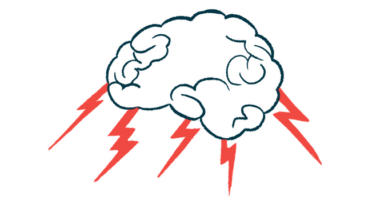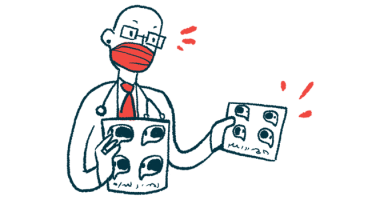Case study: Unusual Cushing’s symptoms after woman’s childbirth
Atypical response included psychosis and severe muscle weakness

A 31-year-old woman exhibited unusual symptoms of Cushing’s disease following childbirth, but didn’t show some of the disease’s hallmark features, such as weight gain and fat accumulation.
The woman’s atypical symptoms, which included psychosis and severe muscle weakness, were accompanied by a challenging clinical course that led ultimately to her death.
The case highlights “that an early diagnosis of Cushing’s disease is important in pregnancy period for its prevalent fetal and maternal complications, and it should be treated early to optimize fetal and maternal outcomes,” the researchers wrote in “A Case Report of Cushing’s Disease Presenting With Psychosis and Muscle Weakness Postpartum,” which was published in the Journal of Investigative Medicine High Impact Case Reports.
Cushing’s syndrome features abnormally high levels of the stress hormone cortisol, called hypercortisolism. Cushing’s disease is a form of Cushing’s syndrome where high cortisol levels are caused by a tumor in the pituitary gland. The tumor causes the gland to produce excessive amounts of adrenocorticotropic hormone (ACTH), which promotes cortisol production.
In rare cases, Cushing’s may be associated with hormonal changes during pregnancy. In such cases, it can be challenging to diagnose, as some of its symptoms overlap with those of a normal pregnancy.
Unusual symptoms
Researchers in Iran described the case of a woman who developed Cushing’s disease after successfully giving birth to her second child.
The 31-year-old woman delivered her baby in the two months before going to the hospital due to signs of pulmonary thromboembolism — a sudden blockage in the pulmonary arteries, which supply oxygen-rich blood to the lungs.
Two weeks before this, the woman had been admitted to another center after falling and having muscle weakness. She had a history of type 2 diabetes mellitus and high blood pressure.
She was agitated, confused, and psychotic during a physical examination. She also had some Cushing’s-like features, including generalized hyperpigmentation, or skin darkening, and excessive facial hair. She didn’t show other typical disease features, such as stretch marks, abdominal obesity, and a “buffalo hump” — an accumulation of fat in the back of the neck and upper back. She also had severe muscle weakness in all her extremities.
Even though “she had no clinical discriminatory features of Cushing’s syndrome,” the combination of symptoms made clinicians suspect possible Cushing’s syndrome.
A diagnosis of Cushing’s disease
The diagnosis was confirmed by tests that showed her urine cortisol levels were severely elevated. Her blood ACTH levels also were elevated and a brain MRI revealed a mass in the pituitary gland, “making a diagnosis of Cushing’s disease more probable.”
She continued to have severe muscle weakness that failed to ease after treatment to correct her low potassium levels, however.
The woman was referred to a neurologist who evaluated her blood work, the results of an electromyography, which evaluates the muscles’ response to stimulation, and nerve conduction velocity tests, which measure the speed at which electrical signals move through a nerve.
The tests revealed her muscle weakness was due to axonal neuropathy, a condition wherein the nerves outside the brain and spinal cord become damaged.
The woman received a five-day treatment of intravenous immunoglobulin wherein immune proteins are infused into the bloodstream to neutralize autoantibodies, or ones that attack the body’s own tissues. Autoimmune attacks are a possible underlying mechanism of axonal neuropathy.
The treatment yielded no good results and she went into septic shock, a life-threatening condition characterized by a marked drop in blood pressure after a widespread infection, but recovered after being treated with broad-spectrum antibiotics and antifungal agents.
The woman was treated with mitotane (marketed as Lysodren) before having surgery to remove the pituitary tumor. Her condition improved significantly after surgery, but she died suddenly a week later, probably due to a blood clot that may have caused her heart to stop.







